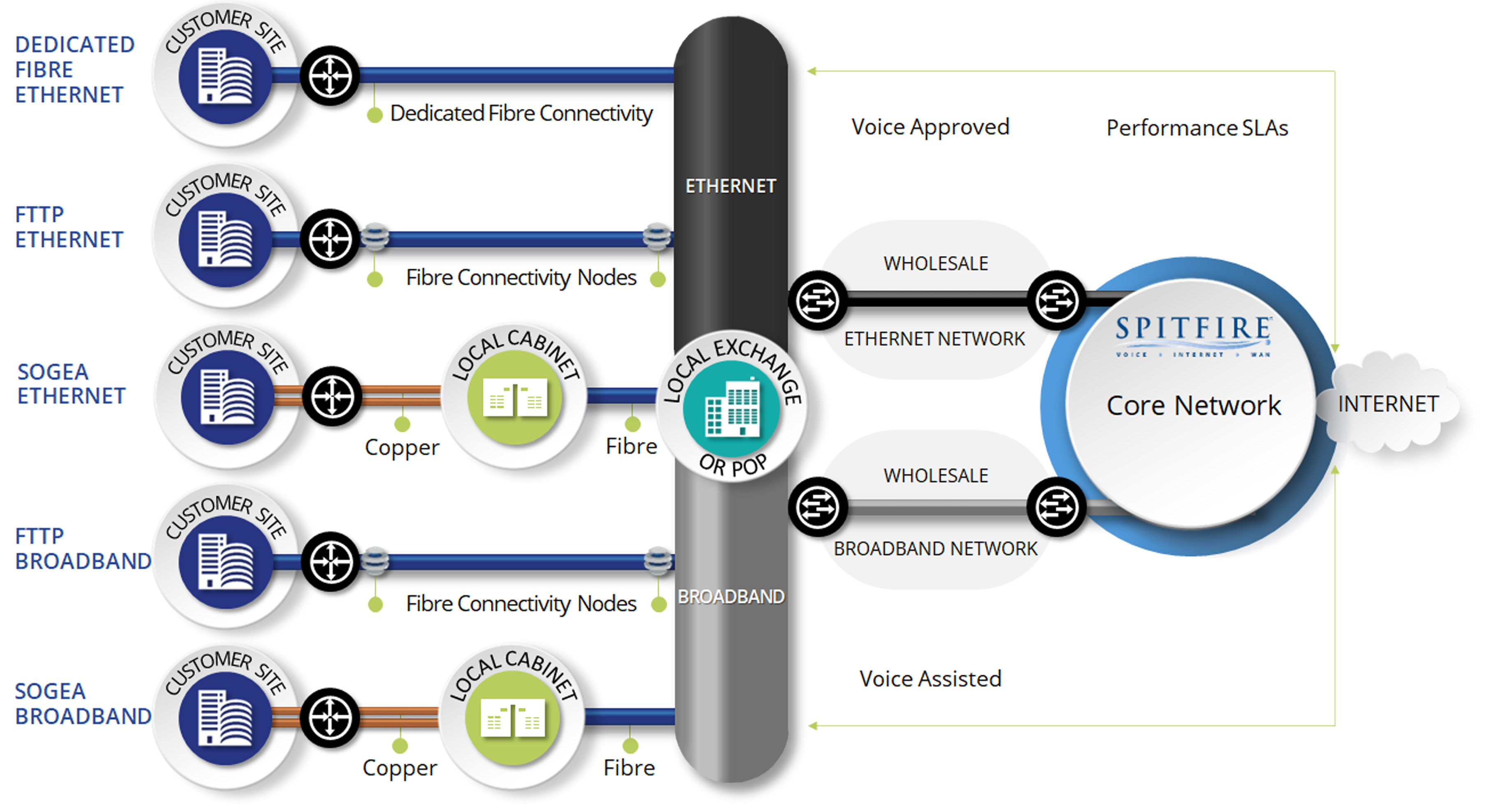The internet connectivity market is perhaps undergoing the most radical period of change since the advent of ADSL over 20 years ago. Promises of Ultrafast connectivity, Gigabit speeds and a Full-Fibre future fill the banner ads. But what are we all actually going to get and when and more importantly how do you cut through the branding to differentiate the multitude of products available?
There’s no doubt that the fixed line future is indeed fibre. Openreach are already in the process of retiring copper lines as they roll out fibre but this is going to be a long task. The majority of properties will be connected by the end of 2026 but the rollout tail may be long. Clearly copper lines still have some life left but with analogue telephony services being phased out by 2025 the copper lines become purely for data connectivity. The default type of VDSL copper based connection, formerly a ‘Fibre to the Cabinet (FTTC)’ circuit ordered to work over an analogue line as a ‘Shared Metallic Path’ facility, has evolved to SOGEA (Single Order Generic Ethernet Access) placed as one order for Fibre to the Cabinet and a copper ‘Metallic Path Facility’ to the premises. With broadband services up to 330Mbps downstream available, VDSL technology still has some life to come.
It’s worth noting that copper lines have a fundamental weakness that isn’t a challenge for fibre. Distance. The rate of signal degradation on a copper line is hugely significant. This is why when FTTC replaced the copper between cabinet and exchange with fibre we saw significant improvements over ADSL. Clearly replacing the remaining copper to each premise with fibre, enabling ‘Fibre to the Premise (FTTP)’ will eliminate the issue once and for all. Achievable bandwidth on a given circuit is no longer estimated based on distance from the cabinet. “Up to” is an indication of the provider’s network capacity rather than the length of a copper wire.
While Openreach has a head start on the ability to deliver fibre all the way to the premise they are by no means the only player. Government funding has actively encouraged diversification and allowed the rise of alternative network providers, Alt-Nets. These providers have focussed on specific geographical regions to provide Fibre to the Premise (FTTP) services in areas where Openreach are likely to be behind the curve, capturing the local markets. So with so many operators in the market how do you know what you’re buying?
Let’s start with what FTTP is actually made of; GPON, Gigabit Passive Optical Networks. Such networks provide a fibre network that resembles an organisation chart – multiple sites converging at a single “PON” that consolidates the traffic up the network to the next node. It’s clear when you understand this that you have shared infrastructure so when it gets busy performance will drop. While FTTP services can reach up to 1Gbps downstream, without a deep understanding of the architecture of the GPON network offered by your provider or a performance SLA you’re likely to have a connection that varies in not just bandwidth but other metrics such as latency and packet loss.
The good news is that FTTP doesn’t just support the variable broadband services. FTTP Ethernet is also available. Whilst it still delivers over shared infrastructure FTTP Ethernet operates well within the limits of the network and is backed by performance SLAs. With profiles up to 1Gbps available this is a real contender where cost effective quality and performance are paramount.
Possibly the biggest distraction is the term “full-fibre”. As we can see with GPON it’s not a guarantee of quality or indeed bandwidth. This is why at Spitfire we talk about Dedicated Fibre when referring to Fibre Ethernet. Only with Dedicated Fibre Ethernet do you have a dedicated strand of optical fibre between your premise and the network node. This naturally removes all contention on the access circuit and provides predictable, SLA backed performance all the way up to the 1Gbps circuit capacity – or even 10Gbps if required.
Clearly FTTP, whether broadband or Ethernet will be the solution for many where available. As ever Spitfire continues to aim to provide our customers and partners with the best connectivity options at any location. To this end we have further expanded our access connectivity providers to extend our reach and options for both Dedicated Fibre Ethernet and FTTP connectivity. Vodafone has become our most recent national Dedicated Fibre Ethernet provider while the addition of Alt Nets CityFibre and G.Network add FTTP Ethernet and Fibre Ethernet services in 63 towns and cities and counting. CityFibre alone aim to serve over one third of UK properties by 2025 while G.Network offers high quality connectivity across London. Spitfire are the first and currently the only wholesale interconnect partner for G.Network.
The connectivity journey over the next few years is indeed going to force decisions for many whether driven by fibre availability or demand of additional bandwidth. By utilising no fewer than 9 connectivity partners and offering a portfolio of broadband, FTTP Ethernet and Dedicated Fibre Ethernet products to connect you to our award winning network Spitfire will continue to be your first choice for connectivity. To assist you on that journey we will continue to keep you informed of developments in both technology and service availability. Not forgetting of course keeping you up to date on the impact of Openreach’s roadmap towards 2025.
Keep informed about 2025: here

